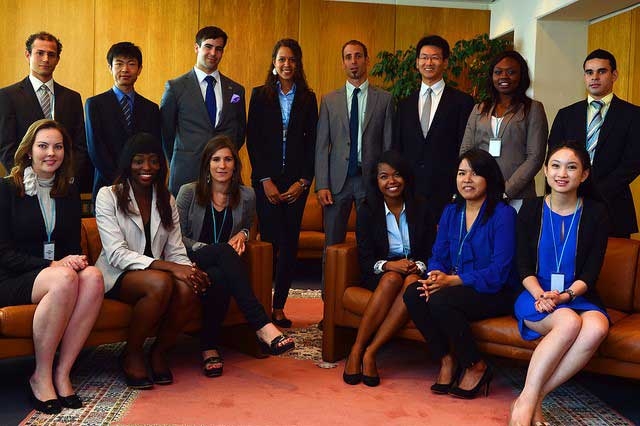The Past
Six years after the fact, there’s no shame in admitting that when I decided to volunteer overseas, I had no clue what I wanted to do. Destination was little more than a passing thought (when I was eventually placed in Vanuatu, I had to look it up on a map) and I didn’t really care what I’d be doing. (Building stuff? Sure, that sounded like a good idea.)
Without a background in international development, concepts related to sustainable development were foreign to me. I was your typical idealistic undergraduate student— just like the estimated 1.6 million people who volunteer overseas every year, I just wanted to help.
In fact, I only had one “must” on my list when it came to finding a volunteer-sending organization—it had to be a registered charity. I wanted to know exactly where my money was going and ensure that it wasn’t lining someone’s pocket. (It’s hard enough to wrap your mind around the concept of paying to volunteer—for me, it was even harder to swallow the idea of someone profiting from my hard-fundraised dollars.)
Six years later, I’m not sure that my criteria today would remain the same—or even if I would have the same options available to me.
A Changing Landscape
Last week, OpenFile Toronto reported that of the 167 funding proposals submitted to CIDA by non-profits—including volunteer-sending organizations—that only 30 applicants (or 18 per cent) were approved for funding. And as grants become increasingly unavailable, charitable organizations are turning to models of social entrepreneurship and corporate sponsorship to fund their work. But ensuring that the funds are used properly is a delicate balance.
In a 2010 Globe & Mail article, journalist Josh Wingrove examined the funding structure of Me to We, a for-profit volunteer-sending company that funnels their earnings back to internationally recognized charity Free the Children. “Advocates say [Me to We’s] example should inspire a new model, one that could be the salvation of the charity sector in a time when governments and other donors are cutting back,” Wingrove wrote. “Critics say that in less-trustworthy hands, it could lead to the exploitation of charitable causes for profit.”
Even for the fortunate few who receive funding, the line between development work and profit is becoming increasingly blurred. This fall, it was announced that volunteer-sending organization WUSC, along with CIDA-heavyweights World Vision and Plan Canada, will receive nearly $2 million in funding from three mining companies. Some worry this is dangerous territory, while supporters say that involving the private sector is a necessary course of action.
On a smaller scale, corporate partnerships are being encouraged and welcomed by non-profits. In 2009, NGO Girl !mpact set the bar for partnerships high by sending a dozen high school students from Scarborough to Kenya. Although the girls had to fundraise to participate, the program was funded by Kraft Canada and the girls were outfitted by corporate sponsors MEC and Nike.
Looking Forward
So what does all this mean? For volunteers, the landscape of volunteering overseas is changing drastically. The choice is no longer limited to choosing between a non-profit and a for-profit agency, because the two are no longer clearly defined.
So if I had to do it all over again? I would still only have one “must.” I tend to agree with Scott Gilmore, CEO of Peace Dividend Trust, when he wrote that, “the most powerful force for poverty reduction is not development assistance—it’s local entrepreneurs.” I would want to volunteer with an organization that had programs that support local entrepreneurs, provide small business loans or micro-financing, or offer small business and vocational training.
Clicks for Kiva
This is part of the reason that I’m so excited to announce that Verge has partner with Kiva Loans this Valentine’s Day. This month, for every person who clicks “like” on our Facebook fanpage, we will lend $0.50 to an entrepreneur registered with Kiva.
How are we going to choose the entrepreneur? One new fan will be randomly selected to choose the recipient of the funds your click helped raise.
Add this article to your reading list


